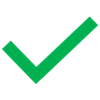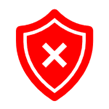
Of course, if you want to prevent a fire, you first need to know how it starts. We list the eight most common causes.
Electrical installations, electric motors and fans can be found on every agricultural company. Think of the lighting and heating, but also drinking, feeding and milking machines. Partly due to new developments, a farmer is dependent on technology. If you maintain these installations properly, you can prevent fires. After all, poor maintenance can lead to overheating or short circuits. But how do you do that, good maintenance?
 Tip 1: ALWAYS have your electrical installation installed, or modified and delivered by a certified installer according to the NEN1010.
Tip 1: ALWAYS have your electrical installation installed, or modified and delivered by a certified installer according to the NEN1010. Then periodically (after three to five years) have a Scope 10 electrical inspection carried out. This inspection is partly aimed at fire safety. Do you work with staff? Then additionally opt for a Scope 8 inspection, which has occupational safety as a starting point. Click here for a list of certified companies.
 Tip 2: Do you have solar panels on the roof of the barn or are you planning to install them? Ask your insurer what requirements there are.
Tip 2: Do you have solar panels on the roof of the barn or are you planning to install them? Ask your insurer what requirements there are. Have that installation inspected upon delivery (Scope 12) and then periodically inspected. And place the inverters OUTSIDE the barn on a fireproof surface or in an area outside the barn.
Always inform your insurer or intermediary before installing the panels and ask about the applicable prevention measures.
A second important cause of barn fires is human activity. It is precisely at this point that you can do a lot to limit the risk of fire.

If you have to, preferably do the welding or grinding outside the barn. And if you can't do it outside, make sure you have enough fire extinguishers at hand. Fire extinguishers, water and fire blankets. Check regularly whether they are still working and conclude a maintenance contract.

Remove flammable materials, shield your workplace with partitions and cover manure grids. Give clear instructions to your staff, even if you outsource work. And after work that may have released fire or sparks, make a check through your barn. Do this immediately and repeat this again after an hour and before going to bed.
What applies to work such as welding and grinding also applies to heating. Try to place the heater fire source outside the barn. Do not place an open fire or stove in the barn. And if there is really no other option, put the stove in a fire-resistant compartment.

When you are going to harvest, it is important to store the hay and straw properly. Do not store hay and straw bales in the barn, but in a loose barn or outside in wrapped bales.
And be alert to the smell of hay scalding. This chemical smell resembles the smell of sulfur and tobacco. If there is condensation on the hay, it may be a sign of overheating.
The core temperature of the hay or straw can be measured with a penetration thermometer. Ask your insurer about the options for gauging the temperature.
You can prevent overheating by pressing only completely dry hay or straw. Also make sure there is enough space between the bales when storing. If in doubt, wrap the bales and store them outside.


Batteries have become an integral part of an agricultural business, but charging is not without risk. Therefore, it is good to take a few precautions:
• Keep the environment clear and ensure sufficient ventilation;
• Install connected smoke or thermal alarms in the barn and at the charging station;
• provide a fixed loading position with collision protection;
• Do not leave connection cables on the ground (hang them up);
• mount an (automatic) fire extinguisher in the charging cabinet;
• have the batteries and charger inspected every year;
• draw up an RI & E for gas explosion hazard (according to NEN-EN-IEC 60079-10 and NPR 7910);
• use an ATEX zone and a no-smoking zone around the charger.


The connection cables cannot reach the ground here.


Unsafe arrangement of battery chargers small tools.
On average, there are three deaths per year in our country due to manure gases. And that's probably just the tip of the iceberg. Therefore, always be aware of the risks and consider using a manure gas meter at manure processing plants.
When mixing slurry, harmful gases are released, which:
1. displacing oxygen, which can cause people and animals to become unconscious and in the worst case die:
2. be explosive, which may cause explosions.

Preferably stay outside the stable yourself. If that doesn't work, don't mix in windless weather. And always ensure maximum ventilation.

Smoking and open fires in and around the barn are also prohibited, especially during manure mixes.

Spontaneous combustion from tractors or shovels is more common than you expect. If those vehicles are in the barn, it can spill over. The cause is often the starter motor or other electrical parts.

Make the engine and exhaust dust-free after intensive use during haymaking or harvesting, for example. You can also place a ground switch in the tractor, so that the voltage to the battery is interrupted and no short circuit can occur.
An additional advantage of that ground switch is that the trigger is also less easily stolen, because the criminals first have to discover where the switch is!
A barn fire can spread very quickly if the air duct is full of dust. Dust can catch fire very quickly and is very flammable.
Make sure that there are no ignition sources in the air duct (lighting or cable connections). And also include this space in the SCIOS scope 10 inspection.

This also applies to any frequency converters present.
Always be well informed! And if in doubt, contact your insurer or adviser
More and more agricultural entrepreneurs are investing in an Energy Storage System (EOS). Rightly so, but did you know that there are different types of batteries, all of which have a different fire risk? What do you choose?
For example, there is the lithium iron phosphate battery (LiFePO4). This battery can be charged and discharged with high power. In addition, it has a long lifespan (many charging cycles) and a high energy density. This battery is safer and more stable than other lithium-ion based batteries. They can withstand extremely high temperatures, and there is little to no chance of explosions if overcharged, overheated, short-circuited, and damaged. The battery is slightly more expensive than a lithium-ion battery.
There is also the saltwater battery. This is safer than, for example, lithium batteries. However, the speed of charging is less and this battery is pricier. When purchasing a battery, make sure you are well informed by an expert.

• Place the battery storage outside the barn and at least ten metres away from the façade.
• If you do place the storage inside the buildings, do so in a 60-minute fire-resistant compartment with smoke alarm and automatic fire extinguisher.
• The housing/container must be equipped with a smoke detector with forwarding and an automatic fire extinguisher.
• The EOS must be installed according to the standard.
If you are now considering purchasing an EOS system, solar panels or a hydrogen system, first contact your insurer or insurance broker. They can inform you about the possibilities and safety requirements, so that the fire risks are kept to a minimum. Moreover, it prevents surprises, such as structural adjustments, afterwards.
Always have tips at hand? Print the infographic and hang the tips in the barn!
Would you like more information? Or are you curious about the latest figures on barn fires, check out our website!